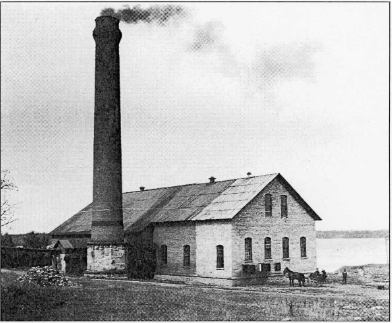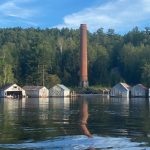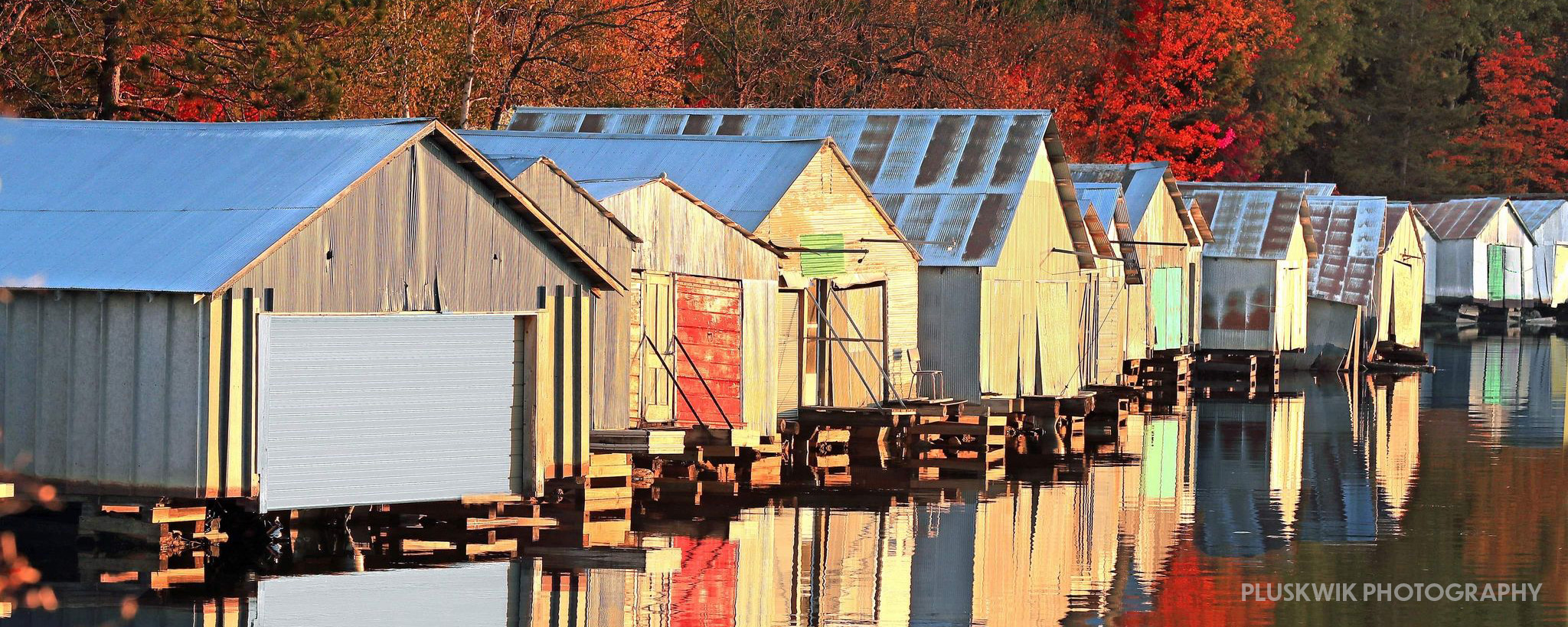Compressor Building Foundation Ruins and Smokestack
Built in 1884, possibly expanded at an unknown date, and demolished in ca. 1930
The Soudan Mine was an engineering marvel when it was first constructed in the late 19th century. To power the drills used in the mine a large stone and brick building was constructed in 1884 to house a steam engine and air compression equipment. The steam engine pumped compressed air up and over the hill to power the drills, and rail tracks were installed to transport coal for the boilers.
Over time, ashes from the plant were dumped at the shoreline of the bay to the north, forming an outcropping that became known as the “Ash Pile”. Eventually, boathouses were built on top of the pile.
In 1924, the mine was fully electrified, and the steam engine powering the
compressor was removed. The building was eventually demolished, but the ruins of the foundation remain to this day, and the brick smokestack still stands. The smokestack is a prominent local landmark and provides a tangible link between the boathouses and the mine.
The smokestack has an octagonal base of rubble stone, about ten feet in height, supporting a cylindrical, red brick chimney. The chimney is approximately twelve feet in diameter and narrows slightly as it extends upward an additional sixty to seventy feet. Several feet above the base is a band of eight courses of dark brown brick that corbel inward. Near the top of the chimney is a band of corbelling that forms a rounded ring. Although the smokestack appears to be in fair condition, the brick shows signs of spalling.
The ruins of the compressor plant are mostly stone, with a few courses of crumbled brick. Although overgrown with grass and weeds, the rectilinear plan and approximate dimensions of the building are still evident.
The Soudan Mine and its related structures are an important part of the history of the Stuntz Bay Boathouse Historic District. As visitors explore the boathouses and shoreline, they are reminded of the area’s rich industrial past and the ingenuity and hard work of those who made it all possible.
Sources: Erin Hanafin Berg and Charlene Roise, “Stuntz Bay Boathouse Historic District,” January 2007, National Register of Historic Places Registration Form, State Historic Preservation Office, Department of Administration


